It still felt miles from sunrise as we arrived on Plaza Recocijo to meet the Llama Path guides and porters. And it was: Only 4:15 a.m., with sunrise expected around 6:30 or 7. Seth and I were among the first present, along with an Irish couple, Suzanne and Rory. The porters handed us steaming cups of coca tea from thermoses and we sipped them, stamping our feet in the cold.
A few words about the porters: There are probably about 20 of them joining us altogether. Some are carrying equipment for the group as a whole: Our tents and food. Some are hired by individual hikers to carry their own personal stuff: Sleeping bags, sleeping pads, clothes, etc. Seth and I had debated about whether to hire a porter, and he’d decided before I arrived to go ahead and do it. This certainly made our hiking easier, though in retrospect I think I could have managed my own stuff. I also felt a little guilty about having help, though the other side of the coin is that I was helping to give someone an income they might not otherwise have.
Each porter can carry up to 20 kilos — about 44 pounds — in their packs, an amount regulated by the trail’s governmental stewards. There’s even a weigh-in at the beginning of the trail. In any case, 44 pounds is a LOT, but these guys handle it easily.
The trip to kilometer 82, the trailhead, takes about 2.5 hours, with a break in the middle for breakfast. (Kilometer 82 means 82 kilometers from Cusco, where this trail would have originally started.)
This might be a good point to show the overall trail route:
When we arrived, there was a good half hour of nervous/excited fussing as the hikers and porters arranged their stuff and prepared to hike.
Here’s my obligatory “about to start the trail” shot. (I rented the pole, along with a sleeping bag and pad, from Llama Path. The pole comes in handy particularly on the third and fourth days, when you’re mostly going downhill.)
We hiked along the Urubamba River, along mostly flat land, taking frequent breaks. There was a lot of chatter among the hikers, so that we sounded almost like we were in a crowded restaurant on the trail. I wondered how much of that I wanted, since it might keep me from actually seeing the scenery and thinking and remembering. But I had a feeling the conversation would taper off as we progressed.
And it did, particularly after our first steep incline. We took a 15-minute snack break, and I noticed what looked like fear on some people’s faces. Seth later told me that the first day was his hardest, psychologically, because he was doing a lot of resisting and doubting in his own mind. It was only later that he kind of surrendered to the fact that it would be hard and just went with it.
Probably the greatest thing, for me, about the Inca Trail are the Inca sites you pass along the way. The first one we saw was Patallaqta, AKA Llaqtapata.
The thing to keep in mind about all these sites is that none of them were “towns” in the traditional sense. The Inca Trail was a pilgrimage route for the Inca, leading to the high holy site of Machu Picchu — just as today it is a spiritual journey for tourists. So the people who lived in these sites were primarily clergy, who performed religious rites; and soldiers, tasked with defending the route and its treasures from possible invaders (first other indigenous groups and later the Spaniards).
In fact, the Spaniards never found Machu Picchu. So the Incan system of hiding their holy city worked for decades even after their civilization had mostly been subjugated to Spanish rule.
The sites along the Inca Trail are still revered by the Quechua people who live nearby. In fact, Casiano told me that although he is Catholic, he still practices many rites derived from the Inca: Seasonal festivals, dances, etc. This mix of Catholicism and pre-Christian beliefs is common among Peruvians.
The terraces you see above served a double purpose: Agriculture but also retaining walls that prevented the whole site from sliding into the Urubamba River, which you can see at the bottom.
What I loved most about Incan urban planning — and this site is a great example — is how deeply it respected the natural systems that predated human settlement. You can see here how the edge of the town conforms to the edge of the Urubamba, and how the terraces work with and follow the curve of the mountain. More dramatic examples will follow.
And yet building these places, given the extremes of altitude and the sheer cliff drop-offs, wasn’t easy. Many people died during construction, either from overexertion or falls.
We also passed stone burial niches high above the trail, clinging to cliff sides. Usually these contained one important person or a couple; or one important person plus that person’s servants, who were killed (in a show of loyalty) to join their master in death.
When it was time for lunch, I discovered what a luxurious affair eating on this trail would be. Three or four courses, all prepared by a trained chef using only portable gas heat, served in a tent that seated all 16 of us. Guacamole, delicious pumpkin soup with local herbs, garlic bread, bean salad, quiche and vegetables with fresh Peruvian cheese. Amazing.
After lunch, I took some notes in my journal. “You’re always busy, huh buddy?” Casiano asked. “Buddy,” I’d learn was one of his favorite words.
“Yeah. I just don’t want to forget things.”
“It’s good.”
I really liked Casiano so far. He was enthusiastic and fun, and would randomly play songs on his Peruvian flute when we stopped for breaks. He’s probably in his early 40s and has done the trail more than 500 times, though he’s had to cut back on the frequency of his guiding in recent years because of knee problems.
We kept hiking after lunch. I was panting from the altitude but felt fine cardiovascularly. I think practicing hot yoga probably helped me a lot, in that it’s an artificial way of constricting oxygen in a room. Maybe I’d been training for this kind of high-altitude climbing without even knowing it.
We arrived at camp, Ayapata, around 5 p.m. The tents were already set up for us.
We had just enough daylight left to set up our sleeping bags, after which there was a “happy hour” of hot cocoa and popcorn. So much food on this trek! Everyone was asleep by nightfall, and I put in my earplugs as the symphony of snoring from the close-packed tents began.



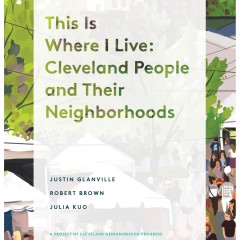


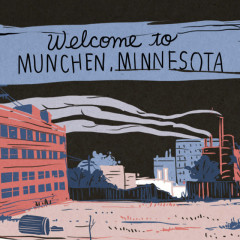
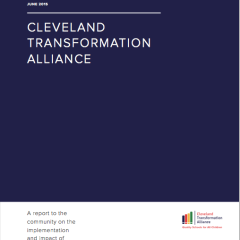

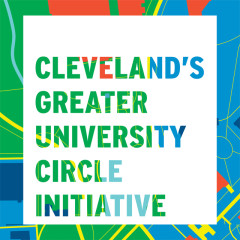
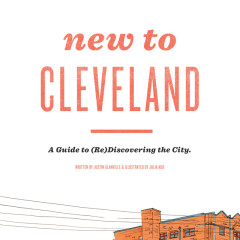
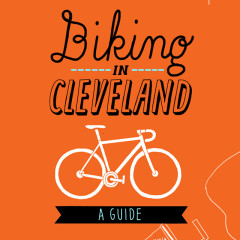
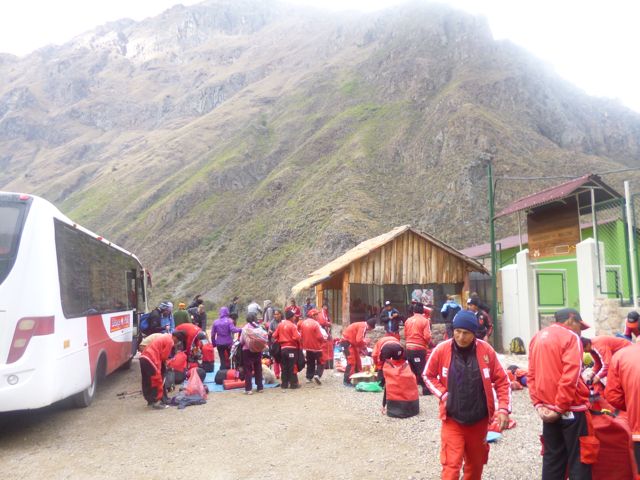
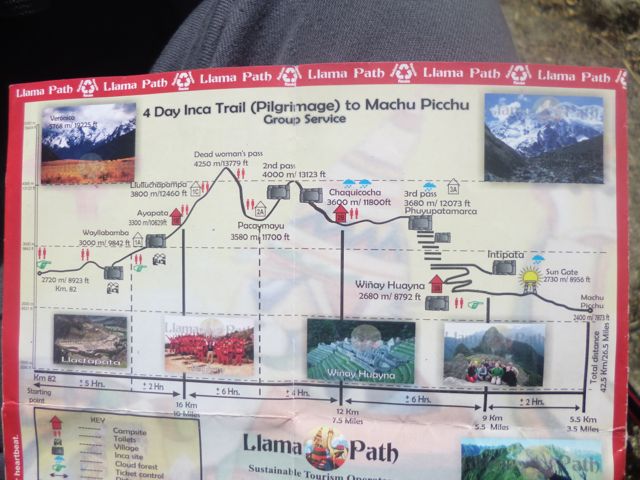
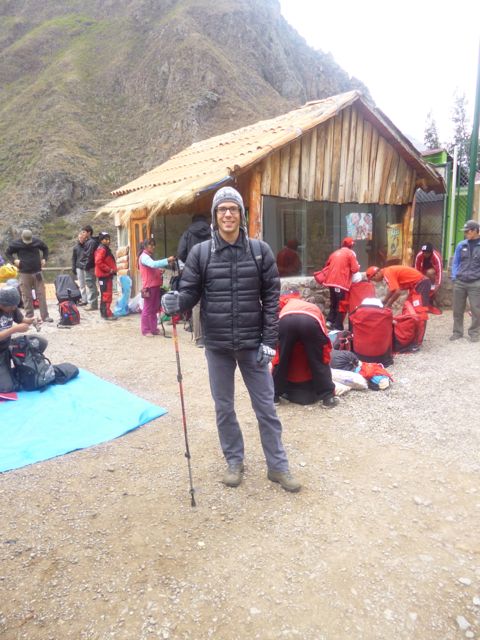


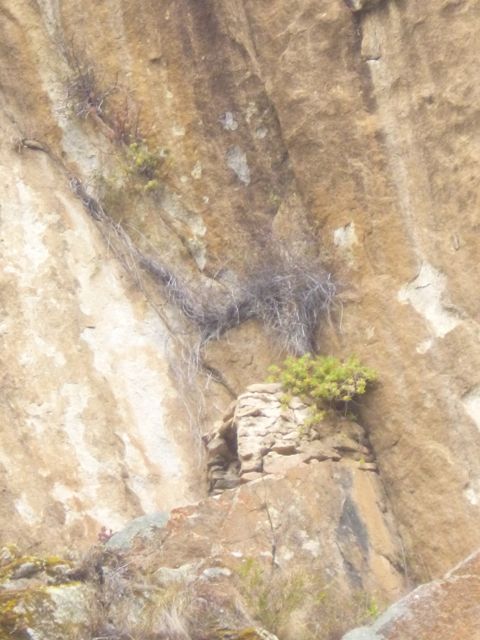
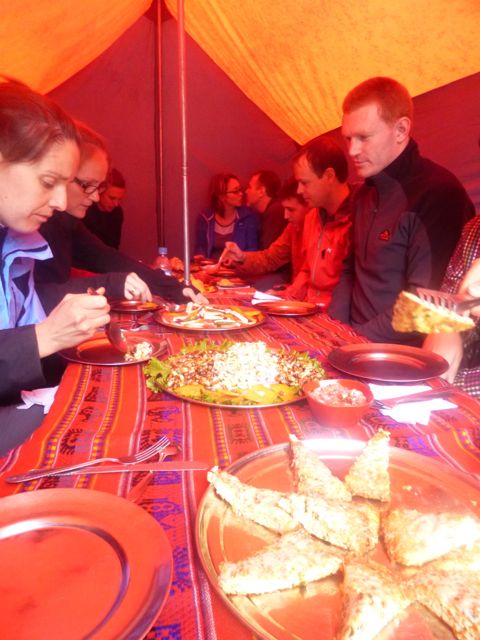
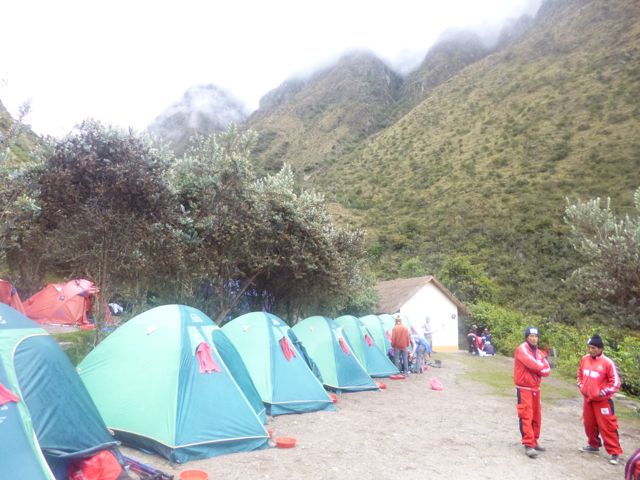
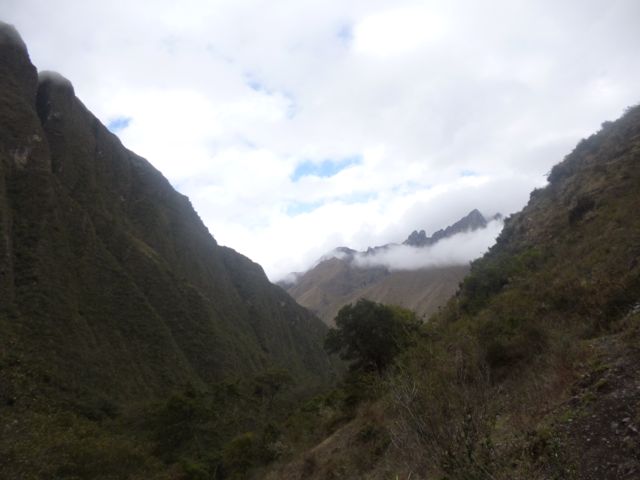

3 Comments